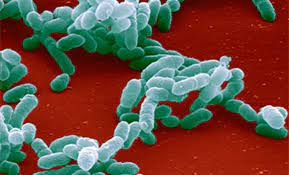Please click the frequently asked questions below for further information and IPC precautions required:
-
What is Haemophilus Influenza?
Haemophilus Influenzae is a Gram-negative anaerobic bacterium. Serotype b (Hib) is the most common and pathogenic. Hib may cause invasive disease, the most common being meningitis and bacteraemia, and it may also cause epiglottitis and pneumonia. Less common presentations include septic arthritis, osteomyelitis, cellulitis and pericarditis.

-
How does it spread?
Usually spread from an infected person to others through:
- close personal contact, such as touching or shaking hands
- droplets by coughing and sneezing
- touching an object or surface with adenoviruses on it, then touching your mouth, nose, or eyes before washing your hands
-
What are the symptoms of Haemophilus Influenza?
H. influenzae bacteraemia can occur with or without pneumonia. Symptoms include:
- Fever
- Fatigue
- Nausea
- Abdominal pain
- Difficulty breathing
- Confusion
H. influenzae meningitis may be accompanied by H. influenzae bacteraemia and symptoms include:
- Fever
- Headache
- Stiff neck
- Vomiting
- Photophobia
- Confusion
It is a serious condition that can be fatal (in approximately 5% of cases) and may cause long term sequelae including deafness, seizures and intellectual impairment.
H. influenzae epiglottitis is a life-threatening medical emergency. The infection causes the inflammation of the epiglottis and surrounding tissues leading to obstruction of the airway. Signs and symptoms include:
- High fever
- Tachypnoea
- Stridor
- Excessive drooling.
Intubation and tracheotomy may be required to prevent respiratory arrest and death.
Vulnerable groups for all types of H. influenzae infections are children under 5 years of age, elderly people and people who are immunocompromised, including those with sickle cell disease.
-
Why is this important?
If NIAS staff are aware that the patient has a suspected or confirmed case this should be communicated to the Control Room (Emergency or Non-emergency as appropriate) and the staff in the receiving unit when transferring the patient to ensure effective patient care and management.
-
IPC Precautions
- Droplet precautions should be used.
- Hand Hygiene should be completed as per the 5 moments in line with usual practice.
- Eye protection should be risk assessed for any concern regarding a splash risk.
- A Fluid Resistant Surgical Mask should be worn.
- Gloves and Aprons should be worn.
- The patient should be transported via ambulance with no other patients present and asked to wear a FRSM (if tolerated and does not interfere with treatment).
- Laundry should be treated as contaminated, placed into an alginate bag and placed into a red laundry bag.
-
What cleaning is required?
All equipment and the ambulance should have an in-between patient clean paying particular attention to touch points.
-
Do staff need prophylaxis or follow up?
If appropriate PPE is worn there is no follow up required for staff.
If staff have had a breach in PPE they should remain vigilant for any signs or symptoms. There is no prophylaxis required and staff do not need to be off from work.




